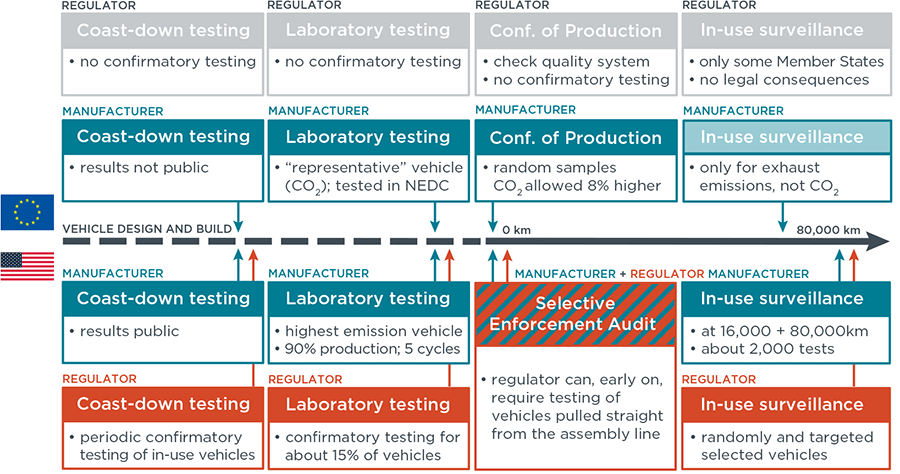White paper
The future of vehicle emissions testing and compliance
A growing body of evidence indicates that one of the reasons for a rapidly growing discrepancy between official and real-world fuel consumption and emission values of new passenger cars is shortcomings in the certification testing schemes new vehicles and in the compliance protocols. Vehicle manufacturers are increasingly able to exploit tolerances and flexibilities, leading to downward-trending type-approval emission levels that are not matched by a similar decrease in real-world emission levels—indeed, the real-world values contradict the type-approval results. The recently uncovered use of an illegal defeat device by Volkswagen crosses a line between illegality and the simple exploitation of legal loopholes that allow manufacturers to observe the letter of a regulation while disregarding its spirit and intent. But it nevertheless serves to dramatically highlight a broader underlying problem with today’s vehicle emissions testing and compliance systems.
This study compares the vehicle testing and compliance schemes in the European Union and the United States, and reveals that the fundamental difference between them is not so much the actual vehicle testing itself but the strong focus on independent conformity testing coupled with enforcement authority in the U.S. In the EU, by contrast, this element of independent re-testing is largely absent from the regulations, and the involved regulatory bodies are more restricted with respect to their enforcement authority.
The study also identifies measures that could be introduced in the EU to improve the current vehicle emissions testing and compliance scheme. Specific recommendations include:
- Introducing the Worldwide Harmonized Light Vehicles Test Procedure (WLTP) as well as regional specifications that go beyond the WLTP itself (such as an ambient test temperature of 14°C in the EU instead of the 23°C foreseen in the WLTP)
- Introducing a testing and target scheme regarding the efficiency of vehicle air conditioning systems
- Strengthening the road load determination procedure by ensuring that measurement results become publicly accessible and by introducing independent conformity testing for road load coefficients
- Establishing a European type-approval authority, acting as a neutral party between vehicle manufacturers and technical service companies and with the authority to demand the recall of a vehicle model or issue penalties if significant deviations were found as part of conformity testing, thereby ensuring a maximum level of independence and credibility
- Introducing a real-world adjustment factor for vehicle fuel consumption and CO2 emission figures
- Putting a stronger focus on in-use conformity testing of series vehicles, complemented by on-road PEMS testing not only for air-pollutant emissions but also for fuel consumption and CO2
- Further developing consumer websites, by providing an EU-wide platform for vehicle owners to report everyday experience regarding fuel consumption
The paper aims to extend the policy discussion over vehicle efficiency and emissions testing beyond measures that are already in the planning stages, and to sketch a more fundamental revision of the vehicle testing and enforcement scheme that will better align emissions test results, customer experiences, and environmental performance in the future.

